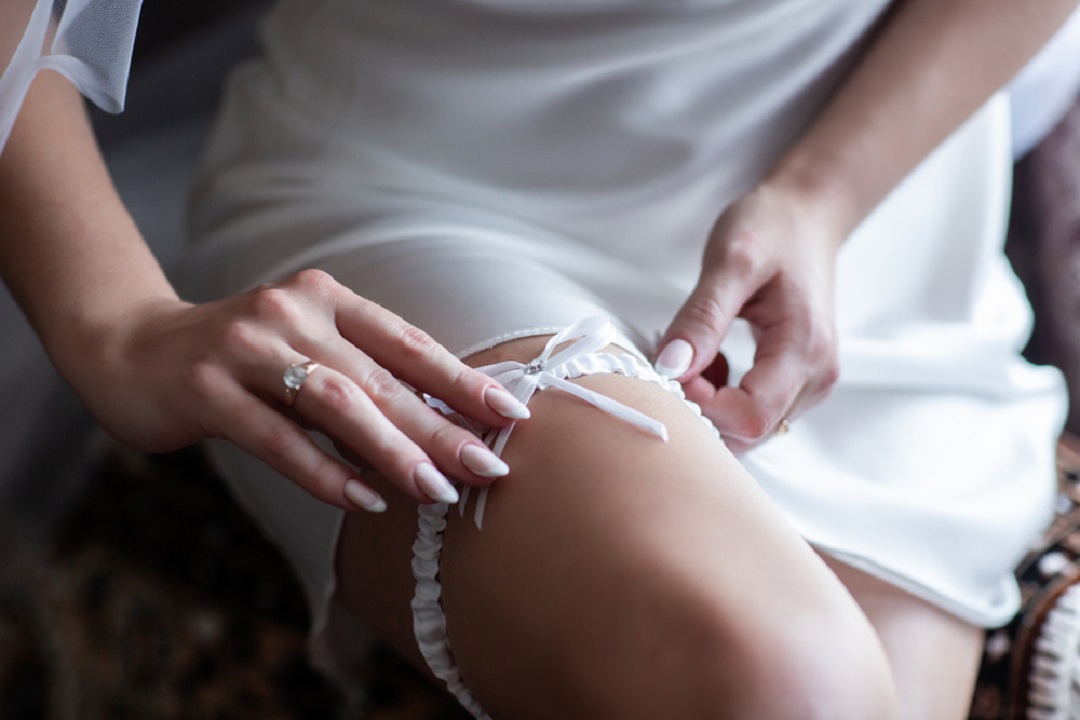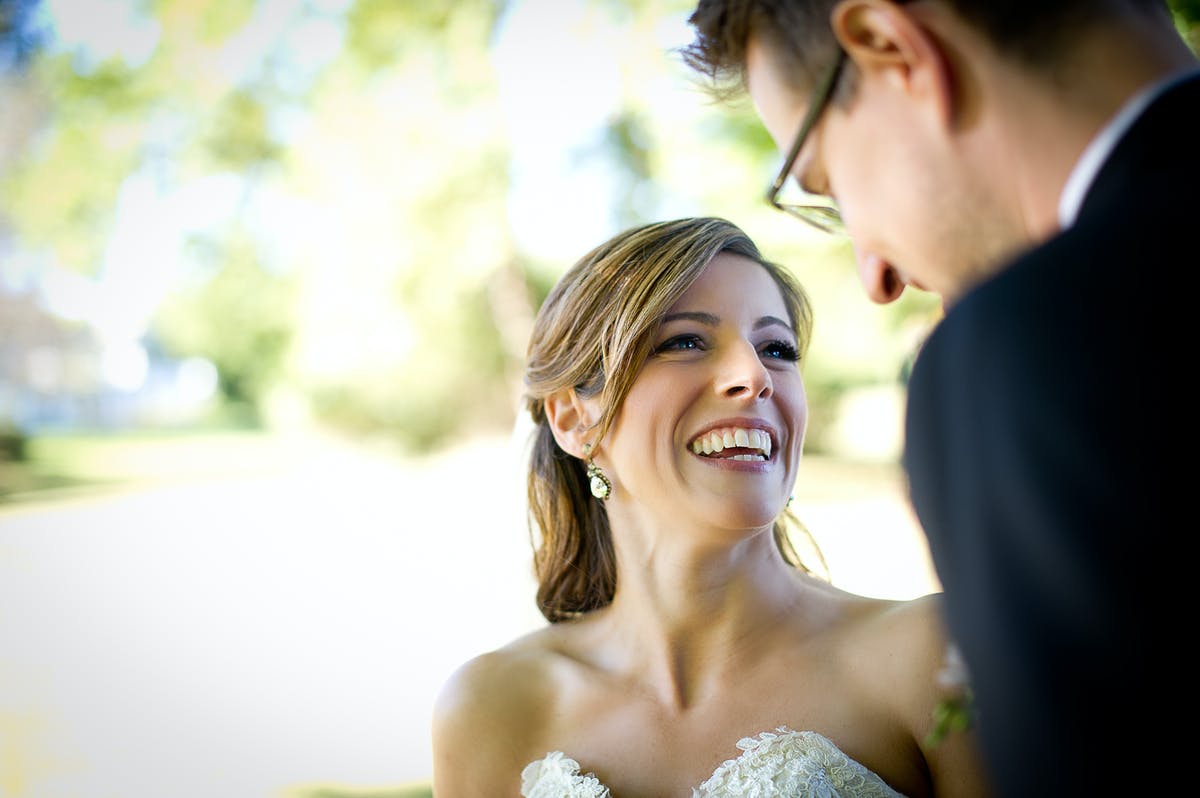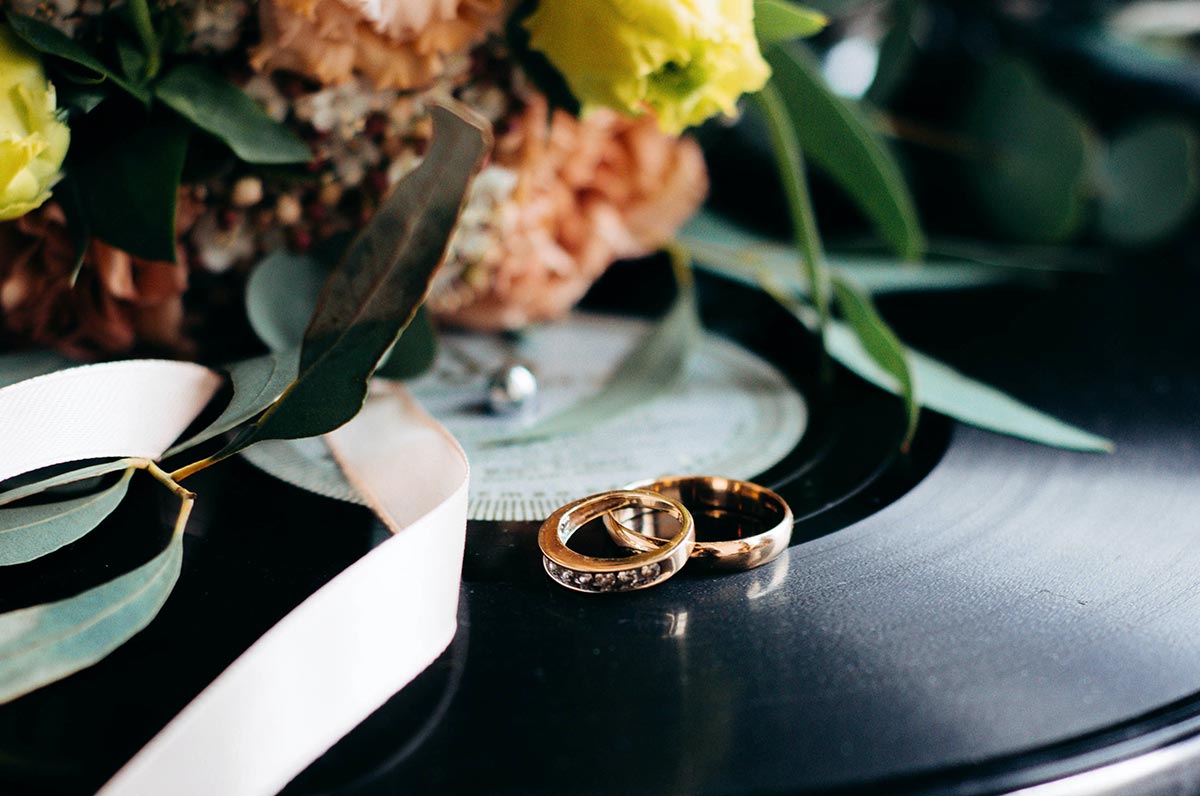- Expert advice/
- Wedding planning 101/
- Wedding day/
- Symbolism of the Garter Toss
- Wedding day
Symbolism of the Garter Toss
Wondering what the garter toss at weddings means? Learn about the symbolism with this complete guide.
Last updated February 5, 2024

The First Look ✨
- The garter toss involves the groom removing the garter from the brides’ leg and throwing for a single male wedding guests to catch.
- In medieval times, wedding guests would tear the bride’s clothes off, so brides began wearing garters they could throw into the crowd.
- Today, the garter toss also symbolizes the passage from single to married life for the bride and groom.
Have you ever wondered what certain wedding traditions symbolize? Today we will be exploring the symbolism of the garter toss and how its meaning has evolved over time.
What is a Garter Toss?
The wedding garter toss is like the male version of the bridal bouquet toss. More specifically, during the garter toss, the groom removes the garter from the bride’s leg (often with his teeth or hands) while wedding guests look on. He then tosses the garter into a crowd of single male wedding guests on the dance floor. In some cases, the man who catches the garter will later put it on the woman who catches the bridal bouquet.
Bridal garter tosses are not for everyone and have been the source of some controversy over the years. Whether you’re for or against the garter toss tradition, the ritual itself holds interesting historical significance. Below are a few of the varied meanings that the garter toss embodies and symbolizes.

What is the Wedding Garter Tradition?
The wedding garter toss is thought to be one of the oldest wedding traditions still practiced today. In Medieval times, wedding guests would try to tear off pieces of a brides’ clothing, because they were thought to be tokens of good luck. Brides began wearing garters to toss as a way to appease the crowd and prevent onlookers from grabbing at them. The bridal bouquet was also used in a similar manner as a distraction so the bride could get away.
One of the earliest iterations of the modern day garter toss was thought to have emerged in early 1500s France. Back then, it was customary for friends and family of the newlyweds to ensure that the marriage was consummated immediately following the wedding ceremony. That often meant that close friends and family would accompany the bride and groom back to the bedroom to observe or wait just outside the door.
Once the deed had been done, the garter was presented as a form of proof. At the time, consummation also often denoted deflowering or a loss of innocence, because sex before marriage was not as commonplace as it is in modern times.
What Does the Garter Symbolize?
Good Luck and Fertility
In the late Renaissance period, the garter began to symbolize good luck and sometimes even fertility. During these years and for hundreds of years after, the garter remained a lucky symbol for whoever held or wore it. Undoubtedly, the suggestion of fertility and luck most likely arose from the early origins of the garter toss that centered around consummation and the idea that having children was a sign of good fortune.
In 18th century England, the “flinging the stocking” game involved guests tossing garters at the bride and groom on their wedding day. If the garters landed on the wedding couple’s heads, it was thought to be a token of good luck in love.
The way the garter’s significance harkens back to its early history reveals how deeply this ritual is rooted in superstition.

Next to Wed
In modern times, the groom removes the garter, rather than boisterous wedding guests. Today, the garter toss itself is more of an intentional passing of the torch to the wedding couple’s single friends and family. Akin to the bouquet toss for women, the garter toss is thought to determine who will get married next. The man who catches the garter and the woman who catches the bouquet are jokingly assumed to be next to walk down the aisle.
Moving on From Single Life
The garter toss also symbolizes a sort of transition for the wedding couple from their single lives to their married lives. In some ways, throwing the garter symbolizes the couple discarding their single lives in favor of a new journey together.
The history of the garter toss and the meanings it takes on are varied and interesting. It has evolved from a ritual with slightly dark, somewhat intrusive, boisterous origins to a more playful tradition perfect for photo opportunities and engaging wedding guests during the wedding reception.
Whether you choose to include the garter toss into your wedding festivities, modify it for a more modern approach, or forgo the toss altogether, knowing its roots allows you to discover the deeper meaning behind this age-old custom.
Up next for you

Should You Do a Garter Toss?
Advice
Wondering if you should do a garter toss at your wedding? Learn about the pros and cons with this complete guide.

Garter Toss Alternatives
List
Here are some ideas to consider for alternatives to the garter toss.

Unique Garter Toss Ideas
List
The garter toss is one of the oldest wedding traditions, but there’s no reason why you can’t put a fresh spin on it today. Here are some unique garter toss ideas to consider.

300 Best Wedding Songs for Each Moment of your Wedding Day
Music + Entertainment
Explore a curated collection of songs for every moment, from the ceremony to the reception, make sure each part of your special day is filled with music and emotion.
- Expert advice/
- Wedding planning 101/
- Wedding day/
- Symbolism of the Garter Toss
Find even more wedding ideas, inspo, tips, and tricks
We’ve got wedding planning advice on everything from save the dates to wedding cakes.
